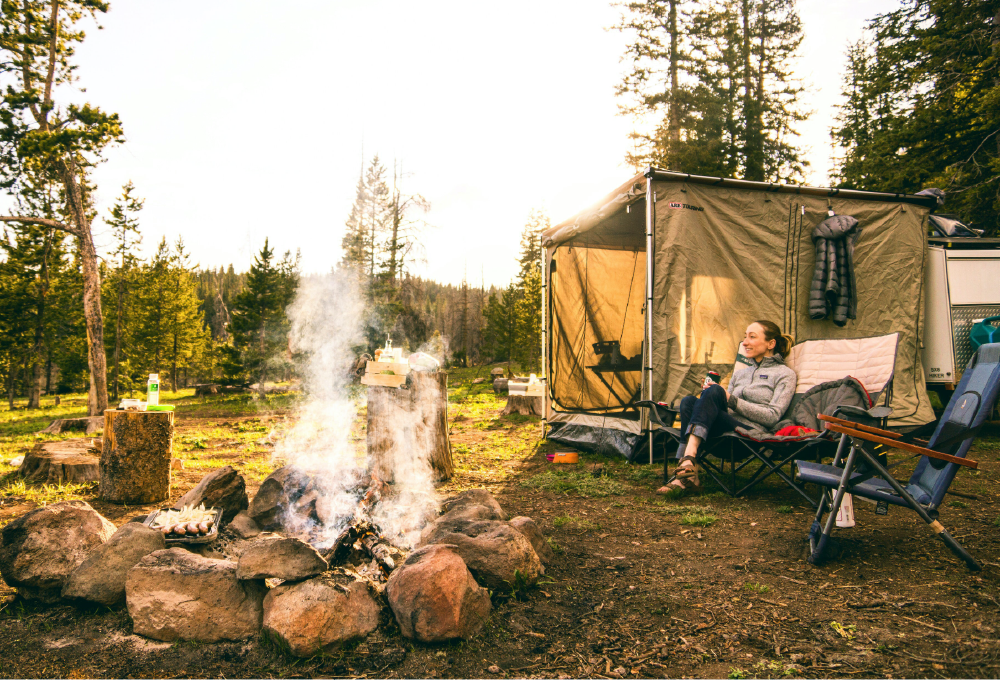
Whether you are towing for practical reasons, or for pleasure, it’s essential to follow these guidelines to help you tow safely and responsibly.
Here are some things you should know:
Do you need a licence to tow?
First of all, the combined weight of trailer and vehicle that you can drive are dependent on when you took your driving test. They differ for those who passed their driving test before or after 1st January 1997.
We recommend you read the full details available on the Government website and find out more about the licence and age requirements here.
Here is some useful additional information to help you tow safely:

Width and length rules
The maximum width for any trailer or towing vehicle is 2.55 metres. The maximum length of a trailer is 7 metres for a vehicle weighing up to 3,500kg.
Weight restrictions
If a trailer has no brakes, the maximum load is 750kg
If you have a braked trailer, the maximum load is 3,500kg.
(All trailers have individual maximum loads)
Maximum Vehicle Towing Capacity
Towing capacity is the maximum weight a vehicle can tow legally. The towing capacity can be calculated from the VIN plate, where line one is the maximum allowable mass and line two is the maximum train mass. Simply deduct line one from line two and you have the vehicle towing limit.
For safe towing, it is recommended by many towing experts that a novice should keep the fully laden weight of the caravan no heavier than 85% of the kerbweight* of the tow car. This is known as the 85% rule. Bear in mind that it is a guide and not legally enforceable. To calculate this, you only need to know two key figures: the kerbweight of the car and the maximum mass of the trailer (called ‘maximum technically permissible laden mass’, or MTPLM).
If the mass of the trailer is 85% or less of the car’s kerbweight, the car will tow it with ease. If it’s between 85% and 100%, be careful – only experienced drivers should use that car to tow such a heavy trailer. The police use the manufacturer’s recommended towing limit as their guide.
Under no circumstances should the vehicle’s gross train weight** be exceeded. But if the trailer is heavier than the car, then it is strongly recommended not to use it to tow that caravan or trailer. This calculation is known by experts as ‘outfit matching’.
*Kerbweight is the total mass of the vehicle with all standard equipment and necessary operating consumables such as fuel, water and oil.
** Gross train weight is the combined mass of the trailer, its cargo, the towing vehicle and its passengers.
Items extending beyond the trailer
It is permissible to have items sticking out beyond the extent of the trailer, up to a maximum of 2 metres, so long as a visible cloth is securely affixed to the end of the item. Beyond that, up to a maximum of 3.05m a marker board must be fitted and illuminated at night.
Tyre pressures
It is essential that both the towing vehicle and the trailer or caravan have correctly inflated tyres for the applied load. Failure to do so risks blow outs and unstable towing. We recommend consulting your vehicle’s handbook for specific guidelines and ensure that the rear tyres are set at the ‘fully laden’ pressure.
Road worthiness
Whilst there are no specific trailer safety tests, it is illegal to operate a trailer if it is unroadworthy. We recommend ensuring you check your trailer is safe to tow each time it is used, particularly if it is used infrequently. The NTTA (National Trailer and Towing Association) have a list of approved service centres and a lot of up to date advice.
Towing rules for trailers and caravans
- Display your vehicle’s number plate on the back of the trailer/caravan and ensure it is illuminated at night.
- Ensure towbars meet EU regulations and are designed for your vehicle
- Keep within the regulatory speed limit.
- Keep the weight of the trailer/caravan and its contents within the towing capability of your vehicle
- Keep the combined weight of vehicle and trailer/caravan (when loaded) below the maximum ‘train’ weight of your vehicle
- There is a legal requirement to have mirrors that allow you to see an area that is 4 metres wide from the side of your caravan and at a distance of 20 metres behind the driver. Towing mirrors are therefore sometimes necessary, but must be removed when not towing
- Check all road lights are working correctly
- Load heavy items on the floor directly over the axle
- Ensure all contents are securely fixed prior to towing
- Ensure all caravan windows and vents are fixed shut before towing
- Never carry passengers in a caravan
General advice
If you are towing a trailer or caravan for the first time, we recommend you do a towing course which will help you gain knowledge from an expert. Then trying a practice run before loading up for your journey. Give yourself plenty of time and opportunity to practice manoeuvres, especially reversing and moving into tight places.
Always drive at a speed that is well within your capabilities, and to the road and weather conditions that prevail at the time.
If your trailer begins to snake or swerve, ease off the accelerator and reduce speed gently. (This can happen if you are driving too fast or the load in the trailer is wrongly positioned).
Plan journeys well to avoid having to make U-turns or taking routes unsuitable for towing vehicles.
This information is intended for guidance only. For fuller details of safe and legal towing, we recommend you refer to the National Trailer & Towing Association.
If you are thinking of buying a caravan or trailer and would like advice, including fitting of appropriate tow bars, please contact us here at Motabars for friendly help, or drop into our store.





